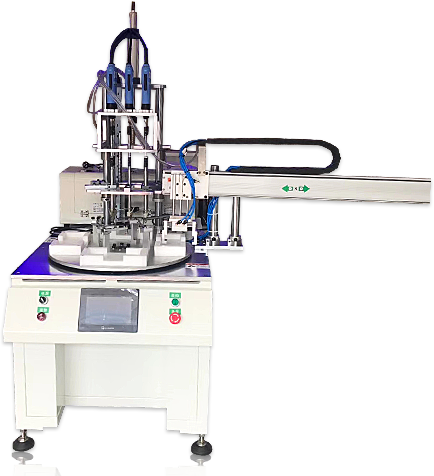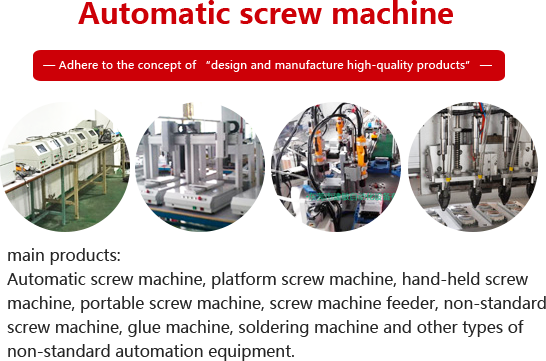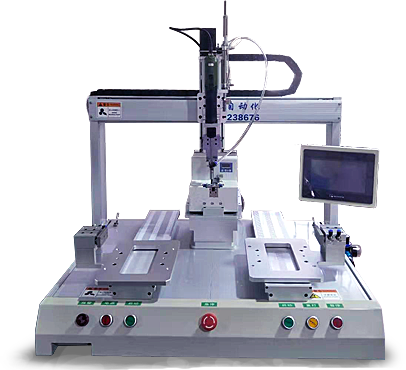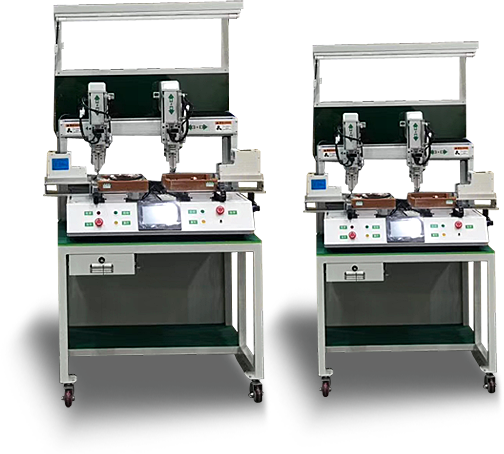With the continuous increase in labor costs, more and more companies are beginning to pay attention to the field of industrial automation equipment, especially non-standard automation equipment. It is not as simple to manufacture as traditional standard equipment, but is customized and operated with flexibility. Convenience and versatility have brought new development opportunities to the industrial manufacturing industry. my country's non-standard automation equipment began to emerge, but encountered many obstacles in the development process.
Non-standard automation equipment demand is strong
In the past, the vigorous development of China's manufacturing industry relied on a lot of cheap labor. However, with the change of time, with the decrease of the new labor force in recent years and the improvement of people's living standards, labor is no longer a cheap resource, and it is becoming more and more common to find a job hard. In order to meet the needs of production, automated production has gradually Recognized and valued by business owners. Non-standard equipment as an important part of automated production has also become more and more popular in the past 10 years, and a large number of non-standard equipment manufacturers have emerged in the market.
At present, the demand of enterprises adopting automation equipment is increasing day by day. Due to the different conditions of various enterprises, the demand for non-standard automation accounts for a large proportion. The expenditure of non-standard equipment and machinery can be budgeted in advance, such as: depreciation of machinery, electricity, gas, daily maintenance, operator wages, etc. The productivity of a machine can be equivalent to several (minimum) to dozens or even hundreds of people, of course, the faster the speed, the higher the cost of the machine. The production cost of the product is maximized. Moreover, the quality of the products produced by the machine is more assured. After the financial crisis in China, non-standard automation equipment is bound to flourish.
The non-standard automation market will grow rapidly, and the application depth of automation products will continue to increase. In this field, compared with developed countries, there is a 10-20 year gap in the overall domestic level. New non-standard automation equipment is often mechatronics equipment, making full use of the latest achievements of information technology. The designers of some Chinese companies are not familiar with electronic products, and they dare not or will not choose them, which greatly limits the improvement of the level. But in the past 10 years, non-standard automation has been widely used in Jiangsu, Zhejiang, Shanghai, the Pearl River Delta, and Beijing and Tianjin, and domestic enterprises are catching up.
Non-standard automation equipment development status
Although the non-standard equipment industry as a whole shows an obvious upward trend, that is, the non-standard equipment market is vast, and even some traditional industries may become the market with the greatest potential. However, my country has a large number of non-standard enterprises, a relatively small scale, backward technology and homogenization of competition are also obvious shortcomings, and there is at least a 10-20 year gap with developed countries in this field.
New non-standard automation equipment is often mechatronic equipment, making full use of the latest achievements of information technology. The designers of some Chinese companies are not familiar with electronic products, and they dare not or will not choose them, which greatly limits the improvement of the level. Many core technologies are not truly independent, and the cost of importing equipment is obviously difficult to reduce. At present, high-end products are still mainly imported from abroad.
According to the market logic, the increased market space can improve the technology research and development level of the enterprise and expand the scale of the enterprise, and provide good development opportunities for the enterprise. However, the objective situation is the opposite. Domestic non-standard equipment companies have not walked out of the vicious circle of low quality and low price. They are still simply imitating, have not developed their own special products and patented products, and have not accumulated more funds for Enterprise development. At present, the production of dozens of small workshops is still the mainstream form of the non-standard equipment industry.
Non-standard equipment cannot be mass-produced, large enterprises are reluctant to do it, and small-scale enterprises can easily obtain living space.
Non-standard equipment is equipment that has no standards to follow and is tailor-made according to the production status of the enterprise. The equipment of company A is often only applicable to company A, and cannot be mass-produced and copied to company B. It usually takes two or three months for a piece of equipment of about RMB 300,000 to provide customers with needs, non-standard equipment manufacturers to provide scheme design, the two parties discuss and determine the scheme, sign a contract, produce design drawings, parts processing, and equipment assembly acceptance . Because the input-output ratio is too low, large-scale enterprises will not pay attention to such trivial and long-term small orders. But such a project is quite attractive to small businesses with only a few more than 10 people. A small-scale enterprise with sales and several mechanical engineers and several software engineers has grown wildly.
The market size of non-standard equipment has grown, but the cake is bigger, but more people divide the cake.
In 2000, only the Taiwanese factories in the Pearl River Delta and Yangtze River Delta were well-known in China for non-standard equipment. These factories add up to about 30. Querying statistics-related data, the scale of non-standard equipment was estimated to be about 600 million, and these 30 companies accounted for about 70% of the market share. By 2012, there were more than 70 non-standard equipment factories in Changan, China's important hardware manufacturing town. There are countless small-scale non-standard equipment nationwide, with orders of magnitude above 10,000; the market size is also expected to grow to about 60 billion. In a simple sentence, although the market size has increased by 100 times, the manufacturers have increased by a thousand times. The new market is occupied by many small manufacturers. Failed to form a large-scale enterprise.
The threshold of non-standard equipment enterprises is low, and the quality of personnel varies.
Why are there so many non-standard manufacturers in the market? The reason is that the initial investment cost of non-standard equipment factories is low, and the entire investment is estimated to be around 300,000. A few grinders, a few milling machines, hundreds of flat houses, more than 10 people can run a non-standard equipment enterprise. Usually, the non-standard equipment factory entrepreneurship model is a joint investment of two or three shareholders, one shareholder is responsible for sales, one shareholder is responsible for technology, and one shareholder is responsible for after-sales, and does not require the intervention of large capital and large enterprises. This situation has led to the non-standard equipment industry being relatively blocked. The industry has not been able to reshuffle, good coins can't be expelled from bad coins, and enterprises have different quality.
Following the doctrine, innovation and research are few.
Few domestic non-standard enterprises have new inventions, new creations, and new applications. An important purpose for domestic enterprises to visit and exhibit at home and abroad is to discover new applications, new processes and new technologies. This approach is very positive in many respects. He shortened the level of equipment gap between my country and developed countries, and improved the level of industrial modernization and agricultural modernization, thereby reducing the labor intensity of the broad masses of people. However, it is undoubtedly that this plagiarism under the banner of reference has seriously reduced the enthusiasm of enterprises to develop new technologies and new applications; over time, it has affected the technical capabilities of China's automation equipment industry, making the core always in the hands of European and American companies. It is a very sad thing to pollute the environment, sell physical strength, demolish houses and build houses to develop the economy. For long-term development, we must attach great importance to the protection of intellectual property rights, so that enterprises can obtain long-term and stable benefits from research and development. The non-standard equipment industry especially needs to protect intellectual property rights.
The requirements of enterprises for automation are relatively primary, which restricts the development of non-standard automation industry to a higher level.
Manufacturing companies chose automation under the pressure of shortage of human resources. However, automation can be roughly divided into three stages from the perspective of saving human resources: semi-automation, full automation, integration of automation and informatization. Based on cost considerations, many enterprises choose semi-automated equipment, and the slightly complicated process is still manually completed. This semi-automated product can be completed independently by a person who has a good understanding of mechatronics. A large number of such low-level automation requirements restrict the development of non-standard industries to a higher level.
The industry is loose and there is no organizational advantage.
Non-standard equipment has not established an industry association. As the saying goes, the crying child has milk. Without industry associations, the government will hardly hear the calls from non-standard industries. We will not get any preferential policies, at least in terms of taxation. Various manufacturers are always dead. Non-standard equipment companies are more alert, fearing that their technology will be learned by others, fearing that their customers will be robbed by others, and fearing that their key personnel will be robbed by others. This disagreement and non-group cooperation has led to non-standard equipment increasingly falling into the pit of price competition. A non-standard enterprise should sell technology and solutions, but now many non-standard enterprises are talking to customers about the cost of materials and management costs. We should think about the lack of technology, non-standard equipment is a pile of scrap iron, so we should elaborate more on how much our non-standard equipment can save customers costs and how much benefits they have. What we get is a reasonable return of our mental work.
The advantages of large-scale enterprises are not obvious.
Although small enterprises are the mainstream of non-standard industries, there are also some medium-sized non-standard enterprises with more than 100 employees. The annual output value of these medium-sized non-standard enterprises is in the tens of millions, but due to management problems, designers and equipment personnel have not shown sufficient responsibility, resulting in unsatisfactory product quality performance of some medium-sized non-standard enterprises. Over time, many manufacturers have turned to small non-standard enterprises to buy relatively cheap non-standard products.
At present, my country has a large number of non-standard automation mechanization enterprises, but the scale is small, backward technology, and homogenization of competition are common characteristics. How to participate in the competition in this industry has become a challenge! Only when there are difficulties, there are opportunities. Facing the good market prospects and development space, it is also a particularly attractive place for this industry. Enterprises that have passed the initial stage of survival will surely usher in the rapid development of the industry.




